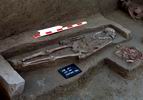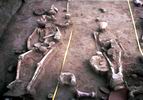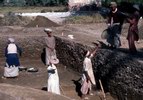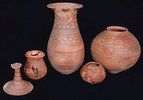

|
This project is in the final stages of publication. Supported by grants from the Social Sciences and Humanities Research Council and the University of Alberta
|
|
|
Publications Nancy C. Lovell.1998. The Biocultural Context of Anemia in the Ancient Indus Valley. Journal of Human Ecology (India) 9(3):205-219. Nancy C. Lovell. 1997. Anaemia in the Ancient Indus Valley. International Journal of Osteoarchaeology 7:115-123. Nancy C. Lovell. 1994. Spinal Arthritis and Physical Stress at Bronze Age Harappa. American Journal of Physical Anthropology 93:149-164. K. A. R. Kennedy, Nancy C. Lovell, J. R. Lukacs, and B. E. Hemphill. 1993. Scaphocephaly in a Prehistoric Skeleton from Harappa, Pakistan. Anthropologischer Anzeiger 51(1):1-29. Presentations Lifestyle and Pathology at Harappa. Paper presented at the Association of South Asian Archaeologists in Western Europe, 1991, Berlin Biodistance, Health and Diet in the Indus and Nile Valley Civilizations: A Comparison of Contexts, Methods, and Interpretations. Annual meeting of the American Anthropological Association, 1991, Chicago Morbidity and Mortality in the Indus Valley Civilization. Annual meeting of the Canadian Association for Physical Anthropology, 1989, Banff Health and Nutrition in the Indus Valley Civilization. Departmental Seminar, Department of Archaeology, University of Calgary, 1988, Calgary Prehistoric Diet in the Indus Valley Civilization: Stable Isotopes and Archaeology. The Human Biology Program and the South Asia Program Joint Seminar, 1987, Cornell University Stable Isotopes and Diet in the Indus Valley. Archaeology Seminar, Department of Anthropology, University of California, 1987, Berkeley Society and Disease in Prehistoric South Asia. 15th Annual Wisconsin Conference on South Asia (with Kenneth AR Kennedy), 1986, Madison Theses David W. Link "Elemental analysis of soil and human and animal bone from a mature phase cemetery at Harappa, Pakistan: Implications for palaeodiet reconstruction", MA 1990
|



